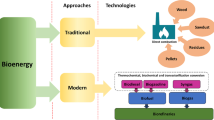Abstract
For the last 9 years, the Government of Bangladesh has been trying to change the way bricks are produced in the country using a technology mandate that bans the widespread conventional technology. In a bid to control the severe air pollution emanating from the brick sector, mandating production technology was chosen to be the preferred policy instrument for regulating the sector. However, the regulatory history shows limited success in making the brick sector less polluting. This paper reviews and analyzes the shortcomings of this technology mandate to spur technology diffusion in the brick sector of Bangladesh. Whereas previous research studied the brick sector on the technological aspects and supply side economics, this paper focuses on the underlying factors hampering policy implementation on the part of the regulatory agency. In order to reorient the policy direction for this important manufacturing sector, this study outlines the policy history of the technological mandate and their shortcomings in generating an impact.

Similar content being viewed by others
References
Ahmed W (2014, April 9) How far will the new brick making law go? The Financial Express. http://www.thefinancialexpress-bd.com/2014/04/09/27799. Accessed 10 Nov 2014
Ahmed S, Hossain I (2008) Applicability of air pollution modeling in a cluster of brickfields in Bangladesh. Chem Eng Res Bull 12:28–34
Azad E (2014) Environmental pollution in Bangladesh: need for a legal overhaul. Bangladesh Law Assoc J 1(1):81–100
Begum BA, Biswas SK, Hopke PK (2011) Key issues in controlling air pollutants in Dhaka, Bangladesh. Atmos Environ 45:7705–7713. doi:10.1016/j.atmosenv.2010.10.022
Blackman A, Bannister GJ (1997) Pollution control in the informal sector: the Ciudad Juárez brickmakers’ project. Nat Resources J 37:829
Blackman A, Harrington W (1998). Using alternative regulatory instruments to control fixed point air pollution in developing countries: lessons from international experience. Resources For the Future (RFF) Discussion Paper 98–21
Croitoru L, Sarraf M (2012) Benefits and costs of the informal sector: the case of brick kilns in Bangladesh. J Environ Prot 03:476–484. doi:10.4236/jep.2012.36058
Darain KMU, Rahman ABMS, Ahsan A, Islam ABMS, Yusuf B (2013) Brick manufacturing practice in Bangladesh: a review of energy efficacy and air pollution scenarios. J Hydrol Environ Res 1(1):60–69
Darain KMU, Jumaat MZ, Islam ABMS, Obaydullah M, Iqbal A, Adham MI, Rahman MM (2016) Energy efficient brick kilns for sustainable environment. Desalin Water Treat 57:105–114. doi:10.1080/19443994.2015.1012335
Department of Environment (2012) Air Pollution Reduction Strategy for Bangladesh. http://old.doe.gov.bd/publication_images/60_air_pollution__reduction_strategy.pdf. Accessed 6 Feb 2016
Eskeland GS, Devarajan S (1996) Taxing bads by taxing goods: pollution control with presumptive charges. The World Bank, Washington
Gomes E, Hossain I (2003) Transition from traditional brick manufacturing to more sustainable practices. Energy Sustain Dev 7(2):66–76. doi:10.1016/s0973-0826(08)60356-7
Government of Bangladesh (1997) The Environment conservation rules 1997. Bangladesh Government Press, Tejgaon
Government of Bangladesh (2013) Brick making and brick-field establishment (control) act 2013. Bangladesh Government Press, Tejgaon
Guttikunda SK (2009) Impact analysis of brick kilns on the air quality of Dhaka, Bangladesh. SIM-air Working Paper Series 21–2009
Guttikunda SK (2014) Emissions from the brick manufacturing industry. In: Dewan A, Corner R (eds) Dhaka Megacity. Springer, Netherlands, pp 319–331
Guttikunda SK, Khaliquzzaman M (2014) Health benefits of adapting cleaner brick manufacturing technologies in Dhaka, Bangladesh. Air Qual Atmos Hlth 7:103–112. doi:10.1007/s11869-013-0213-z
Guttikunda SK, Begum BA, Wadud Z (2013) Particulate pollution from brick kiln clusters in the Greater Dhaka region. Bangladesh. Air Qual Atmos Hlth 6(2):357–365. doi:10.1007/s11869-012-0187-2
Hashim SM (2014, March 25) No easy answer to air pollution. The Daily Star. http://www.thedailystar.net/no-easy-answer-to-air-pollution-17077 Accessed 25 March 2014
Hussain A (2016, January 9) Chittagong battles traditional brick kilns to protect environment. Dhaka Tribune. http://www.dhakatribune.com/bangladesh/2016/jan/09/chittagong-battles-traditional-brick-kilns-protect-environment. Accessed 10 Jan 2016
Islam MS (2015) Implementation of policy to control industrial pollution in Bangladesh: major drawbacks. In: Dawoody AR (ed) Public administration and policy in the Middle East. Springer, New York, pp 297–317
Khan T (2014, April 19) Deadline June; 30pc converted. The Daily Star. http://www.thedailystar.net/deadline-june-30pc-converted-20628 Accessed 20 April 2014
Luby SP, Biswas D, Gurley ES, Hossain I (2015) Why highly polluting methods are used to manufacture bricks in Bangladesh. Energy Sustain Dev 28:68–74. doi:10.1016/j.esd.2015.07.003
Prothom Alo (2016, January 23) Brick Making & Kiln Establishment (Control) Act 2013. Roundtable meeting organized jointly with UNDP, BELA. Daily Prothom Alo, p 15
Saha CK, Hosain J (2016) Impact of brick kilning industry in peri-urban Bangladesh. Int J Environ Stud :1–11 doi:10.1080/00207233.2016.1179014
Shahjahan M (2014, July 5) Brick production law comes into force amid lack of preparation. The Financial Express. http://www.thefinancialexpress-bd.com/2014/07/05/43294 Accessed 10 July 2014
Tehzeeb A, Bhuiyan M (2014) Operation of brick kilns in Bangladesh:a comparative study. Asian J Water Environ Pollut 11:55–65
World Bank (2011) Introducing energy efficient clean technologies in the brick sector of Bangladesh. ESMAP Report No. 60155-BD. Washington
Acknowledgments
The author wishes to thank colleagues of his former employer Clean Energy Alternatives (CEA) for supporting the write-up with inspiration, information, and motivation. The author is grateful to Professor Gang He and Professor Debra Dwyer for their thoughtful review, and the Department of Technology & Society for supporting this publication. The author also thanks the experts and mentors of South Asian Network of Development and Environmental Economists (SANDEE) for organizing research workshops where this concept note was originally presented and developed.
Author information
Authors and Affiliations
Corresponding author
Rights and permissions
About this article
Cite this article
Haque, N. Technology mandate for greening brick industry in Bangladesh: a policy evaluation. Clean Techn Environ Policy 19, 319–326 (2017). https://doi.org/10.1007/s10098-016-1259-z
Received:
Accepted:
Published:
Issue Date:
DOI: https://doi.org/10.1007/s10098-016-1259-z




